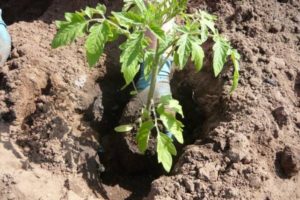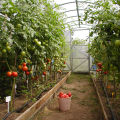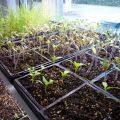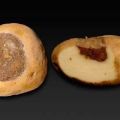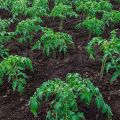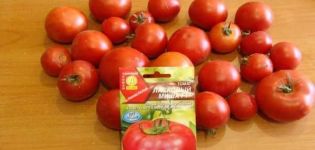Causes and treatment of tomato alternaria
Tomato Alternaria is a disease caused by the fungus Alternatio solani Sorauer. Owners of greenhouses and residents of regions where hot weather gives way to rain are especially often faced with a pathogenic microorganism. How to identify and prevent a dangerous disease?
Description
Alternaria is one of the main diseases of tomatoesalso called dry or brown spot. It was first discovered at the beginning of the 20th century on the territory of the Kursk region. Today, the fungus infects tomatoes in the southern and central parts of Russia, as well as in countries located in the southwest - Ukraine, Moldova. The average crop damage is 50%, and under the worst conditions, 100%.
The progression of the disease is evidenced by small brown spots that first appeared on the lower, and then on the upper part of the plant.
The spots are round on the leaves, and elongated on the stem. Under the influence of moisture, the ulcers are covered with a barely noticeable bloom of black and slowly grow, merging into one large area.
The fungus affects not only large parts of the plant, but also peduncles, sepals, a significant part of which is gradually covered with small round specks of black color. Due to extensive tissue necrosis, dry leaves fall off, and the damaged part of the stem often breaks, as a result of which the plant dies.
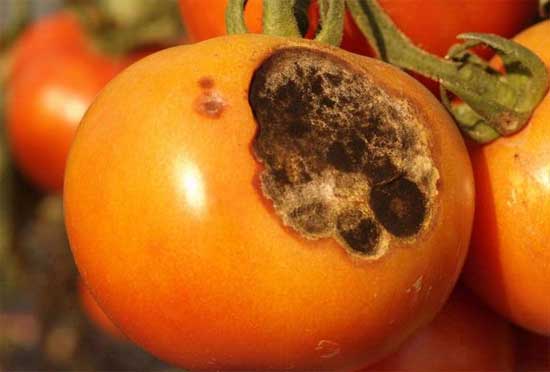
A tomato affected by Alternaria is covered with depressed spots with a black bloom. Most often, fruit ulcers are located around the stalk or in places where the skin is damaged. The fungus also affects the core, which is why tomato seeds turn black and lose their germination. Affected fruits ripen ahead of time or fall off.
Causes of occurrence
Like all fungi, the Alternatio solani Sorauer fungus actively develops in conditions of high humidity. Such conditions are created when summer days with a temperature of + 24– + 30 ⁰С are replaced by night rains. Indoors, the main catalysts for the development of pathogenic microflora are excessive watering and poor ventilation. In such conditions, the incubation period for the development of the disease is 3-4 days. The yield of plants affected by Alternaria is reduced by 20-50%.
Alternaria also develops on plants with mechanical damage. Conidia and mycelium, which got into the soil from the affected plant, provoke diseases of tomatoes and other nightshade crops.

Especially often the fungus develops in film greenhouses and greenhouses on tomatoes with an early ripening period with high humidity.
How to prevent and cure?
As you know, the treatment of fungal diseases is a very difficult process.Therefore, in order to save yourself from headaches about the harvest, it is better to try to prevent the development of pathogenic microflora. To reduce the likelihood of infection of tomatoes with Alternaria, do the following:
- After the end of fruiting, the bed is cleanly removed from plant residues, and the soil is thoroughly plowed.
- In greenhouses where tomatoes grow in the same place for several years, before sowing, the soil is treated with a solution of potassium permanganate, copper sulfate or other disinfectant.
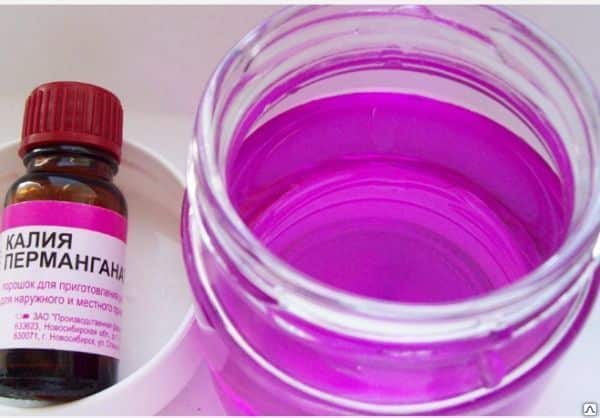
- Water the plants at the root.
- Medium and tall varieties are tied up, and the leaves at the bottom of the plant are also removed.
- Alternate planting tomatoes with other plants. In the same place, the culture is planted 3 years after the previous time.

- As a fertilizer, mixtures are used, which include a large amount of potassium.
- Chose for planting varieties with high immunity. The variety Sanka, Lyana, golden bullet, Luch is endowed with good immunity to Alternaria. Among the tomatoes of hybrid origin, seeds are planted by Alex, Nadezhda, Aurora.
- Disinfected healthy seeds are used for sowing.
- With an interval of 2 weeks, tomato bushes are treated with fungicides. The number of sprays should not exceed 3-4.
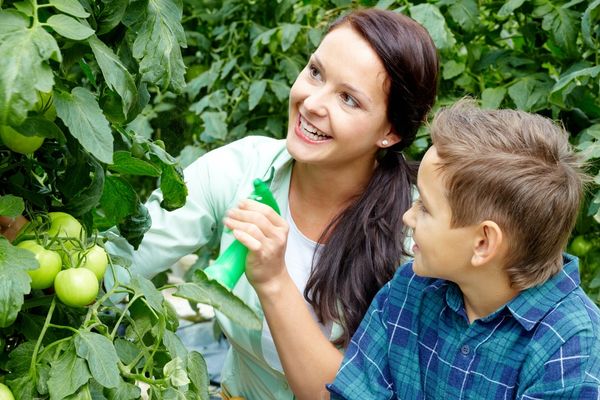
Please note that for planting, you cannot choose a place where eggplants, potatoes and other nightshade crops grew last season, since they are prone to the same diseases, including Alternaria.
Treatment of tomatoes begins immediately after the detection of the first signs of the disease with contact fungicides. These drugs include Antrakol 70 WG, Ridomil Gold MC, Ditan M-45, Quadris. When choosing a treatment agent, one must take into account the fact that not all preparations containing copper are suitable for the treatment of dry spotting.
Before purchasing a fungicide, you need to carefully read the instructions.
In addition to pesticides, biological preparations Fitosporin, Trichodermin are used for treatment. In case of untimely treatment or its absence, the affected tomatoes die, and the fungus enters the soil and spreads to neighboring plants.

If preventive measures are taken and diseased plants are treated in a timely manner, the crop can be saved. The main rule of healthy plants in a greenhouse is the correct watering and ventilation regime. Only those gardeners who comply with agro-technological requirements will be able to avoid crop loss.
